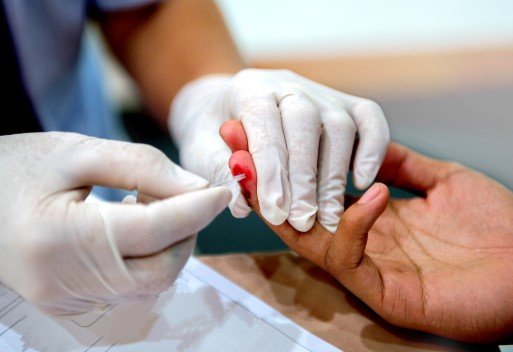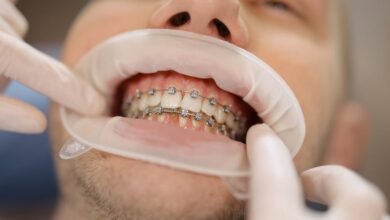Who Should Get Tested for HIV? Risk Factors & Recommendations

It is the foremost prerequisite for your health and that of other people. Knowing the circumstances under which you stand in HIV leads to informed decisions and gives opportunities to go for treatment earlier.
Anyone can get HIV; what makes the difference is the risk factors that increase their chances of exposure. These are a few categories of people considered necessary for more frequent testing.
Why HIV Testing is Important
An HIV test is one of the biggest positive steps toward prevention and early treatment of infection. Symptoms of HIV can take years to appear, so testing is the only way to determine the status. Early detection allows patients access to life-saving treatment that can improve their general health, achieve long life, and significantly reduce the chances of transmission to others.
HIV testing also serves as an integral part of normalizing stigma. The more people are encouraged to get tested as part of the routine health care of individuals, the more normal and common the talk of HIV in a community, the dynamic label that creates awareness and support for those around them.
5 Major Risk Factors for HIV
You need to know that HIV can make an impact on anyone, but with the risk factors, you can understand when to take the step to get preventive measures or priority testing, as expanded here below on the most significant risk factors, such as the following:
- Unprotected Sexual Activity
HIV is mainly transmitted when individuals engage in unprotected sex, either through the use of barriers such as condoms or any barrier method. This risk would further increase with the number of partners because many partners would mean many unknown HIV statuses. Some kinds of sexual intercourse, such as anal sex, carry a higher risk for transmission-the delicate tissues are more likely to tear, causing direct contact with the HIV virus.
- Injecting Drug Use
Sharing needles, syringes, or other drug-injection paraphernalia is a great contributor to the transmission of HIV. Where shared drug equipment is involved, such contaminated blood can gain direct access to the bloodstream and increase irrefutably. One injection drug user should be advised to use needle exchange centers or safe practices information, while community health initiatives provide support for reduced drug-related harm and access to testing services.
- STI Co-Infections
Syphilis, gonorrhea, and chlamydia are sexually transmitted diseases (STIs) that increase the risk of HIV infection and existing STIs. STIs create ulcers or sores and cause inflammation, opening a path for HIV entry. Patients suffering from STIs should frequently check for HIV, promptly treat co-infection, and alert and treat partners to break the chain of transmission.
- Occupational Exposure
Accidental exposure to blood, needles, or other bodily fluids from a contaminated needle source potentially exposes healthcare workers, first responders, and other professionals in medical or caregiving, but with rare incidence due to stringent safety. Most incidents may occur as post-exposure prophylaxis (PEP) emergency effective measures to reduce the possibility of transmission from HIV exposure for healthcare professionals if administered timely.
- Mother-to-Child Transmission
HIV-positive women during gestation may infect their fetus through the placental barrier, during labor, and in the period following it while breastfeeding. However, with more advanced medical intervention in administering ART during pregnancy up to the time of cesarean delivery, there has been a significant decline in this risk. To limit the transmission possibility, HIV-positive mothers must work very closely with their healthcare providers on a plan.
Top 7 Recommendations for Regular Testing
Regular HIV tests depend on lifestyle, risk factors, and exposure. So, here are some extended guidelines for those who should consider regular tests and the timing of such tests:
- Low-Risk Individuals
For people with very low exposure risks—such as in long-term monogamous relationships or who have never participated in any high-risk behavior—testing at least once as part of routine healthcare is a good baseline. Knowing your status provides peace of mind and ensures you’re not unknowingly living with the virus.
- High-Risk Groups
People considered ‘high risk,’ such as those indulging in unprotected sex with multiple partners, sex workers, or even drug addicts who inject drugs, should warrant having a test done at least on an annual basis if not every six months. Having regular tests ensures early detection and quick treatment access.
- New Relationships
Couples embarking on a new relationship might want to consider getting tested together. It is a strong assurance, and it provides a means for everybody to know their status and the risk they may be at in terms of HIV. It also helps open communication between partners and creates a deeper trust.
- After High-Risk Events
If, in recent times, you have engaged in risky activities such as unprotected sex, shared needles, or accidental exposure through a medical procedure, immediate testing for HIV is highly important. Such tests do not reveal the infection in the early days after exposure; thus, healthcare providers commonly encourage follow-up tests after the original test.
- Routine Healthcare Integration
Take HIV or STD test at home on a routine basis, no matter how low the chances might seem. This helps make this practice seem typical rather than emergency-type testing. Thus, it will realize timely intervention regarding cases that could go unnoticed. For instance, having an HIV test on your annual exam may be a proactive way to stay current with your overall health.
- For Expectant Mothers
Pregnant women should do HIV testing as a regular component of prenatal care. Early detection can lead to measures being put into place by the health care provider to decrease the incidence of mother-to-child transmission, hence, better health outcomes for both mother and child.
- For Individuals on PrEP
People taking pre-exposure prophylaxis (PrEP) are supposed to have regular tests, mostly after 3 months. This is for the reason that the pills keep working and also to catch exposure early.
Read also: Reference-Based Pricing in Healthcare: A Strategy for Cost Efficiency
The Final Words
An HIV test is not merely another medical procedure; it is a step toward securing one’s health while committing oneself to a healthier community. An early diagnosis can save lives and curb transmission and, moreover, open doors for effective interventions to help people live long, healthy lives. Whether through a risk resulting from actions or by considering a routine, testing becomes an act of responsibility and empowerment.




